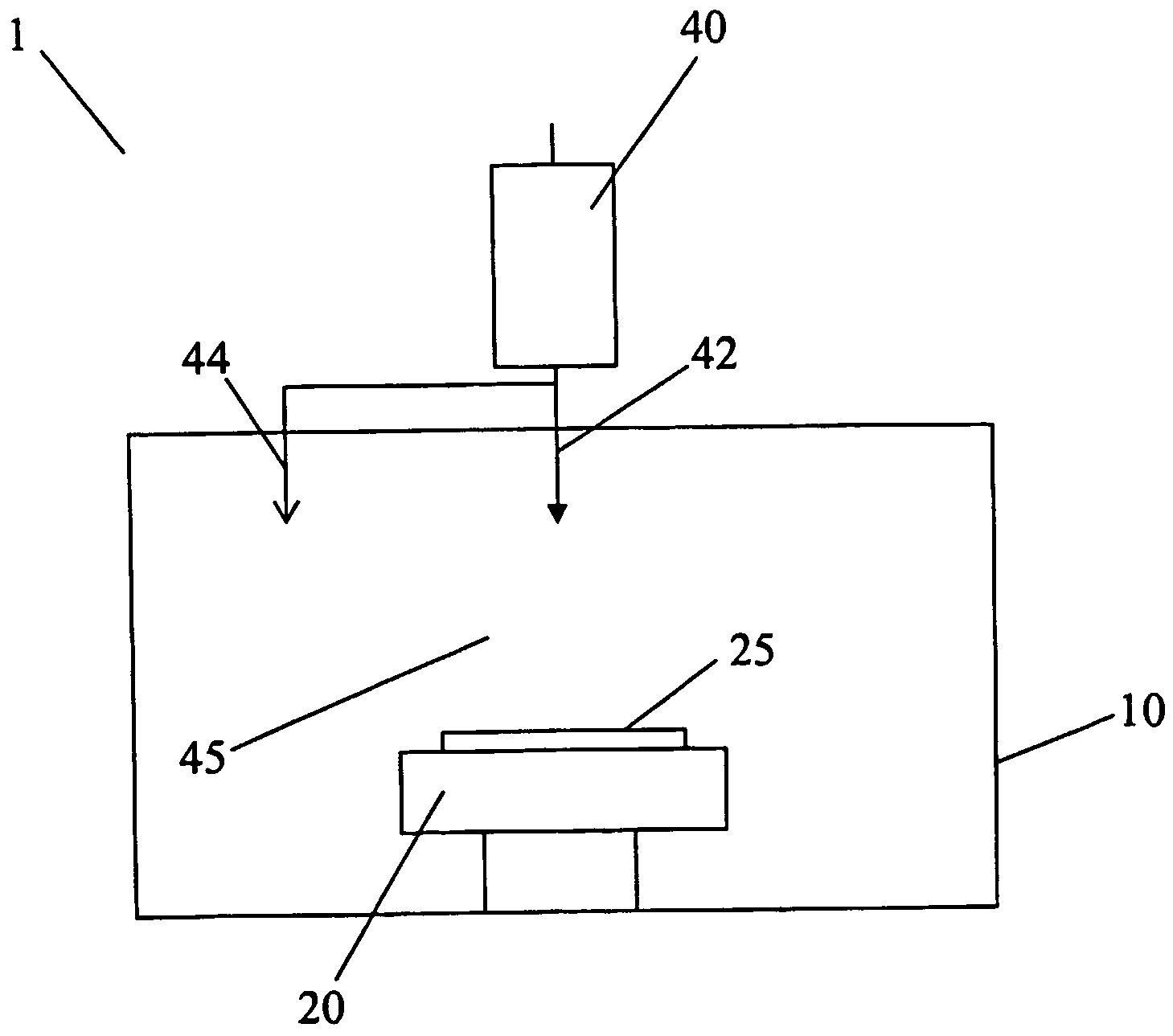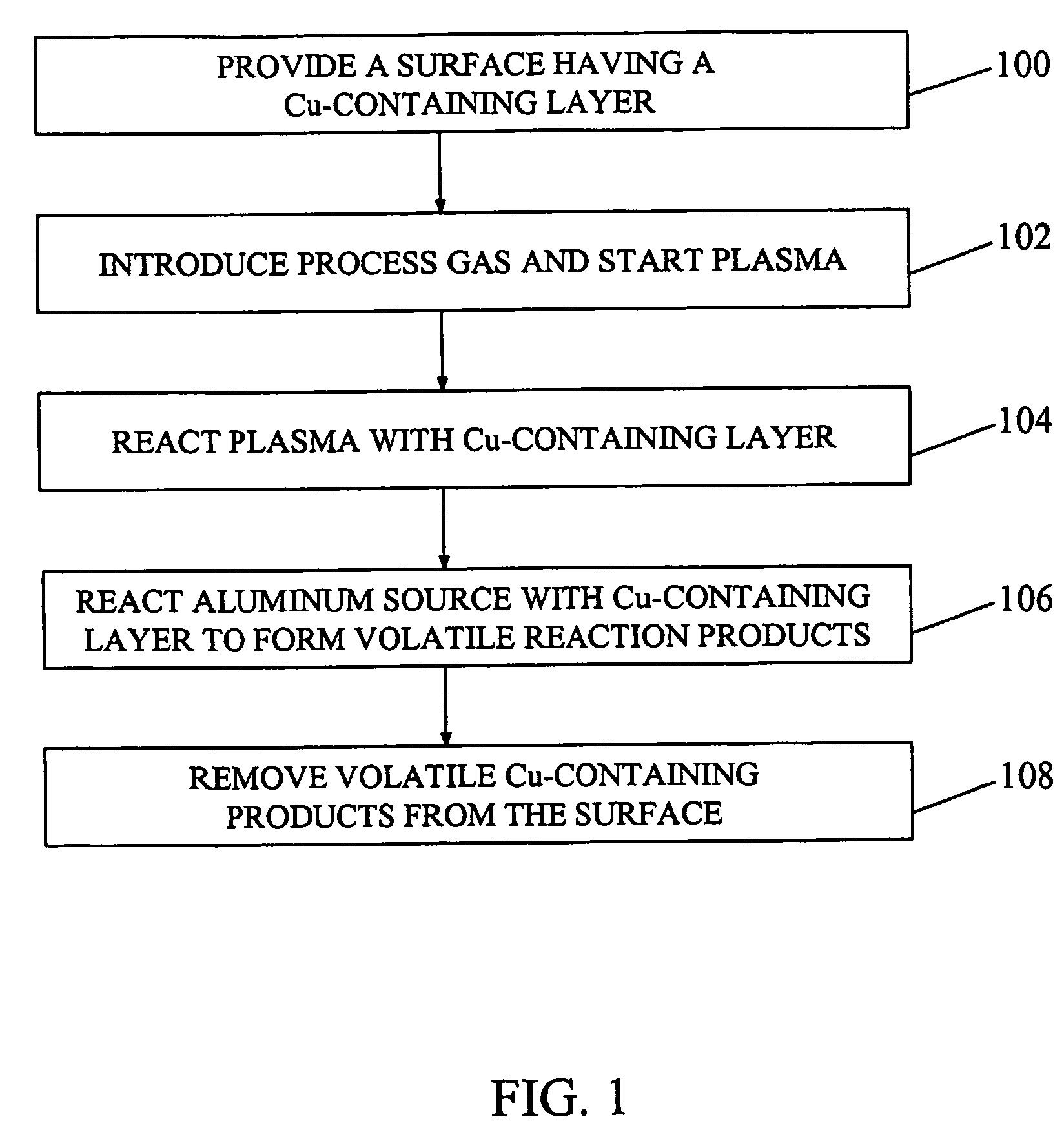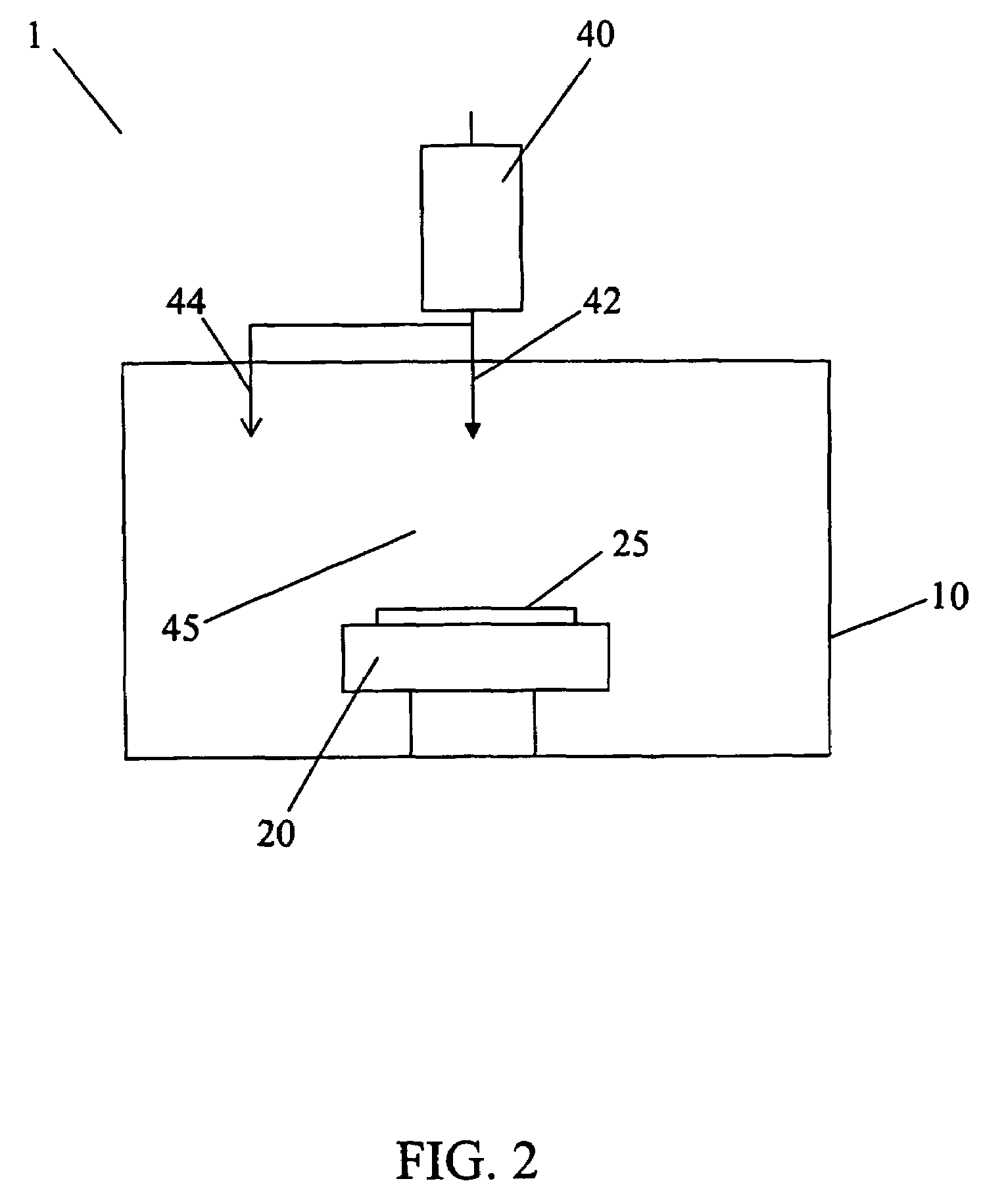Plasma etching of Cu-containing layers
a technology of cu-containing layers and plasma, which is applied in the direction of electrical discharge tubes, decorative arts, electrical equipment, etc., can solve the problems of difficulty in defining extremely fine features, limiting the ability to batch-fabricate sub-micron magnetic devices, and challenging cu-cmp technology
- Summary
- Abstract
- Description
- Claims
- Application Information
AI Technical Summary
Problems solved by technology
Method used
Image
Examples
Embodiment Construction
[0024]In general, the present invention pertains to a plasma processing method for etching pure Cu layers, Al—Cu alloys, and other Cu-based alloys for manufacturing an integrated circuit.
[0025]The method uses a plasma process that comprises a reactive halogen species and an aluminum source to etch Cu-containing layers by forming volatile reaction products that are removed by ion-assisted etching.
[0026]For example, the reactive halogen species can be formed from a chlorine-containing gas that is selected from the group containing Cl2, HCl, BCl3, SiCl4, CHCl3, CCl4, and mixtures thereof. Reactive halogen species can also be formed from non-chlorine containing gases such as aluminum bromide.
[0027]Al layers used in integrated circuits commonly contain a small amount of Cu (2—Al2Cl6. A reduced etch rate for Al—Cu layer with high Cu content is possibly due to a limited supply of aluminum chloride from the etching of Al in the Al—Cu film, that is available for reacting (complexing) with th...
PUM
| Property | Measurement | Unit |
|---|---|---|
| temperature | aaaaa | aaaaa |
| temperature | aaaaa | aaaaa |
| temperature | aaaaa | aaaaa |
Abstract
Description
Claims
Application Information
 Login to View More
Login to View More - R&D
- Intellectual Property
- Life Sciences
- Materials
- Tech Scout
- Unparalleled Data Quality
- Higher Quality Content
- 60% Fewer Hallucinations
Browse by: Latest US Patents, China's latest patents, Technical Efficacy Thesaurus, Application Domain, Technology Topic, Popular Technical Reports.
© 2025 PatSnap. All rights reserved.Legal|Privacy policy|Modern Slavery Act Transparency Statement|Sitemap|About US| Contact US: help@patsnap.com



